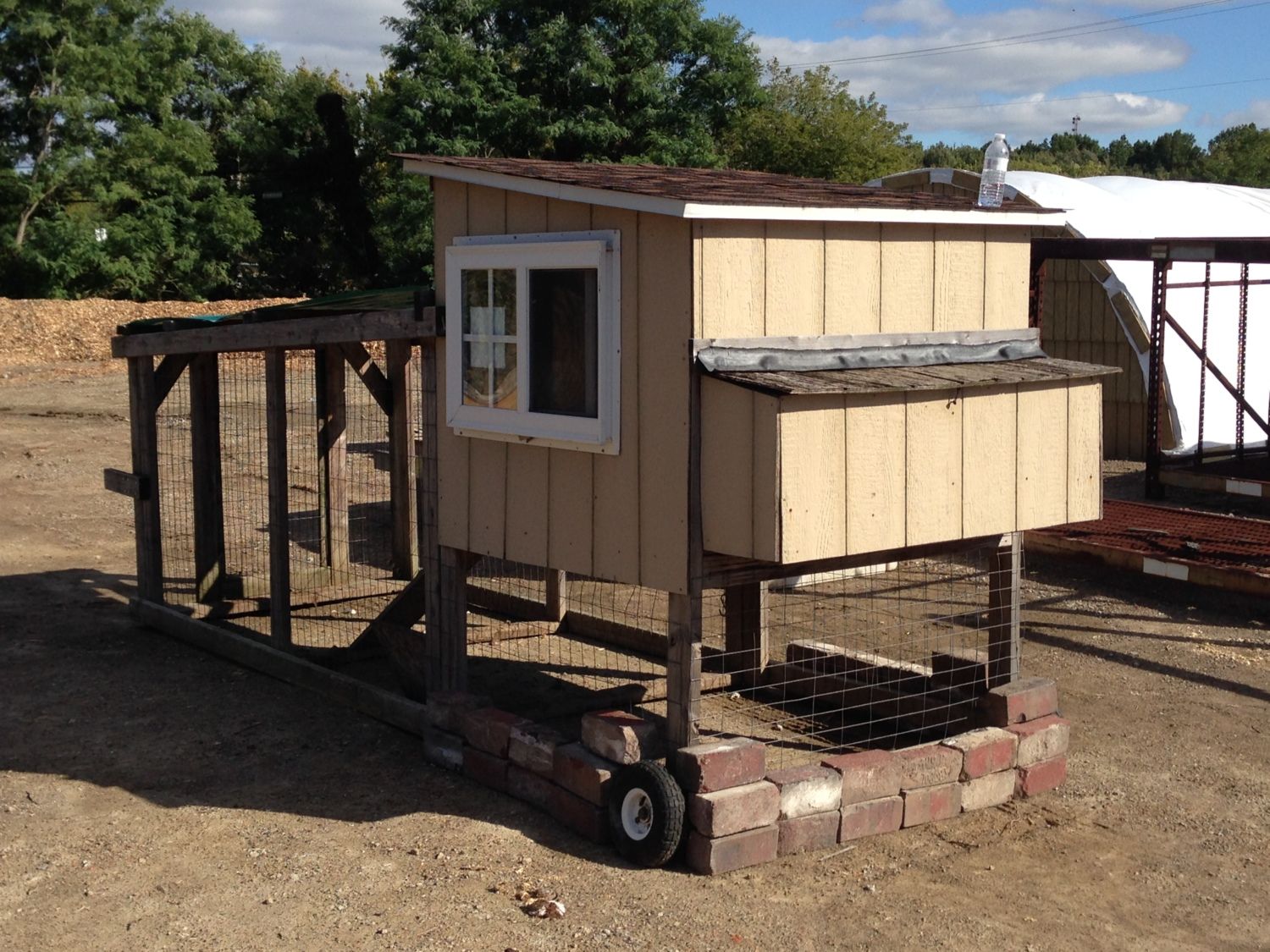I'm new to all this.
Originally I was going to start with chickens in the Spring of 2015.
Then a local man hurt his back and I ended up with a very nice chicken tractor and four very healthy laying hens for only $75.


Since the property where the chickens are kept has no power, and I had some room left in my budget, I decided to do solar power for the lights and heat.
I'm going to try to show each set of components in separate postings. Then I'll do a tally of the expenses. I'm sure there are people who will want to know what it all cost. I started out knowing nothing about solar and I still don't really know that much more now. I don't sell anything and don't claim to be any kind of expert. As I make additions and revisions, I'll add to this thread. Don't be surprised if I look silly from time to time. Your patience is appreciated.

The panel itself is a 230 watt UL approved standard solar panel. It has a 25 year life. It's about 3' x 5' with a light aluminum frame and attached connectors.

I put the panel on an older industrial pallet on wheels. I figured the tractor is portable, so the solar panel should be able to follow the chickens where ever they may roam.
Simple mounting with treated lumber makes the panel completely adjustable should the angle facing the sun need to be adjusted in different seasons.
The white deep super (honey bee box) is where the batteries are. I had two deep-cycle marine batteries in storage and both are inside the white box. Between the panel and the batteries is a small regulator that makes sure the panel does not overload the batteries. It will stop the current from the panel going to the batteries once they are fully charged.
The panel, cable, and charge controller: $220.
The pallet and misc wood: $25
The used honey bee box and cover: $15
Two used deep cycle marine batteries: $120
Misc wire, screws, cable, block: $20
$400 invested for the solar panel and power storage.
It is simple, but very sturdy. It's heavy enough to withstand the wind and very easy to move. Just pick up one end and it will wheel across the yard.
I have it sitting a few feet from the coop as distance is an issue with DC current.
Originally I was going to start with chickens in the Spring of 2015.
Then a local man hurt his back and I ended up with a very nice chicken tractor and four very healthy laying hens for only $75.
Since the property where the chickens are kept has no power, and I had some room left in my budget, I decided to do solar power for the lights and heat.
I'm going to try to show each set of components in separate postings. Then I'll do a tally of the expenses. I'm sure there are people who will want to know what it all cost. I started out knowing nothing about solar and I still don't really know that much more now. I don't sell anything and don't claim to be any kind of expert. As I make additions and revisions, I'll add to this thread. Don't be surprised if I look silly from time to time. Your patience is appreciated.
The panel itself is a 230 watt UL approved standard solar panel. It has a 25 year life. It's about 3' x 5' with a light aluminum frame and attached connectors.
I put the panel on an older industrial pallet on wheels. I figured the tractor is portable, so the solar panel should be able to follow the chickens where ever they may roam.
Simple mounting with treated lumber makes the panel completely adjustable should the angle facing the sun need to be adjusted in different seasons.
The white deep super (honey bee box) is where the batteries are. I had two deep-cycle marine batteries in storage and both are inside the white box. Between the panel and the batteries is a small regulator that makes sure the panel does not overload the batteries. It will stop the current from the panel going to the batteries once they are fully charged.
The panel, cable, and charge controller: $220.
The pallet and misc wood: $25
The used honey bee box and cover: $15
Two used deep cycle marine batteries: $120
Misc wire, screws, cable, block: $20
$400 invested for the solar panel and power storage.
It is simple, but very sturdy. It's heavy enough to withstand the wind and very easy to move. Just pick up one end and it will wheel across the yard.
I have it sitting a few feet from the coop as distance is an issue with DC current.
Last edited:


